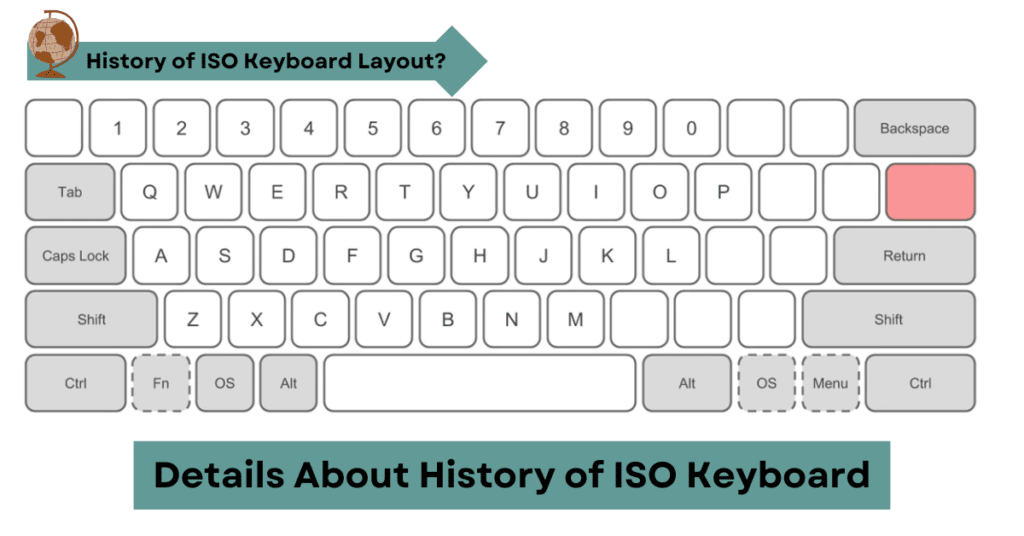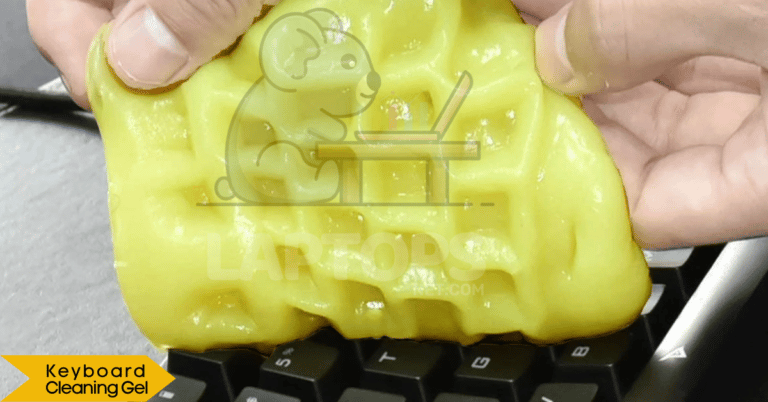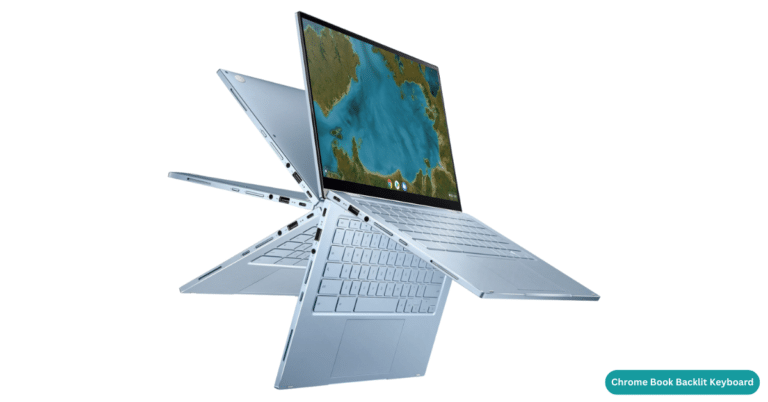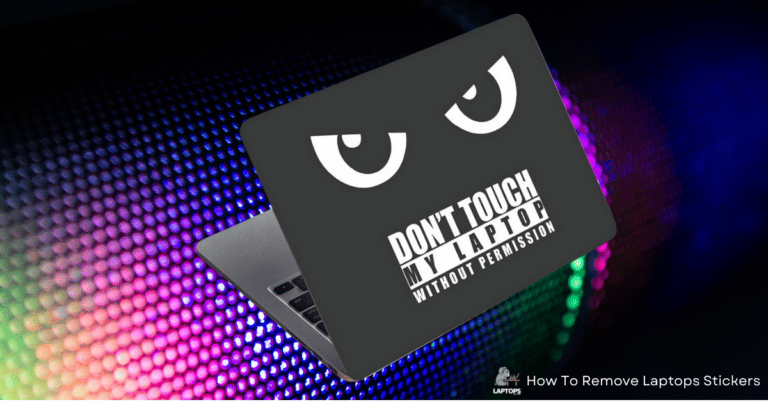Now you know what today’s topic is and why you are here. So, let’s start with the topic, “What Is ISO Keyboard Layout?”
What Is ISO Keyboard Layout?
The ISO keyboard layout, also known as the International Organization for Standardization keyboard layout, was developed in the 1970s by the International Organization for Standardization (ISO).
History of ISO Keyboard Layout?
This global organization sets standards for a wide range of products and technologies.
At that time, various keyboard layouts were used throughout Europe, each with a specific arrangement of keys.

This made it difficult for people to type efficiently when using different computers or to work in other countries.
To solve this problem, the ISO created a standardized keyboard layout that could use consistently across Europe.
We designed the ISO layout with ergonomics in mind.
It has several key placement differences compared to the US layout, particularly the placement of the Enter and Shift keys, which are more prominent on the ISO layout.
This is done to make it more comfortable and efficient to type.
After its creation, the ISO layout quickly gained popularity in Europe and other parts of the world.
It is widely used in Germany, Spain, France, and the UK. However, it is less commonly used in North America, where the US keyboard layout is more common.
It is worth noting that ISO layout is not the only layout standard; different countries and regions use different layout standards.
However, ISO layout was one of the first widely accepted standards. Hence it got the name “ISO layout.”
Additionally, as mentioned before, the ISO layout could be better; other variations, such as ANSI and JIS, have different essential placements and standards.
Comparison of Keyboard Layouts
When typing on a computer, there are different keyboard layouts.
Two of the most popular arrangements are the ISO layout, which is widely used in Europe and other parts of the world, and the US layout, which is more common in North America.
The main difference between the ISO and US layouts is the placement of specific keys.
For example, on an ISO keyboard, the “Enter” key is shaped differently and is larger than the “Return” key on a US keyboard.
The “Shift” keys are also larger on an ISO keyboard.
Another difference is the placement of the “Z” and “Y” keys. On a US keyboard, the “Z” key is in the same position as the “Y” on an ISO keyboard, and vice versa.
If you are used to typing on a US keyboard, you might need help typing on an ISO keyboard first.
Additionally, in some cases, the ISO layout has more keys, specifically the special characters, which can be accessed via the alt-gr key on the ISO layout.
In contrast, the US layout would require multiple keystrokes.
It’s worth noting that ISO layout is not the only layout standard; different countries and regions use different layout standards.
For example, the ANSI layout is widely used in the US, and JIS is commonly used in Japan.
This layout also has key placement differences.
Related This:
Essential Placement and Labeling Differences between an ISO and Us Layout
The ISO layout, also known as the International Organization for Standardization layout, is widely used in Europe and other regions. In contrast, the US layout is more common in North America.
While both layouts have similar keys and functions, you should recognize critical placement and labeling differences.
Enter Key:
The enter key on the ISO layout is longer than on the US layout. It is located on the right side of the keyboard, below the backspace key.
On the US layout, the enter key is located in the keyboard’s middle, below the “shift” key.
Shift Key:
Similarly, the shift key on the ISO layout is longer than the one on the US layout. It is located on the left and right sides of the keyboard.
On the US layout, the shift key is located on the left and right sides of the keyboard.
Return key:
On the ISO layout, the Return key is located on the left side of the keyboard, above the enter key.
This key is labeled as “enter” on the US layout and is located in the keyboard’s middle, below the “shift” key.
Alt & Windows key:
ISO layout does not have the Windows key, which is present in the US layout. However, Alt critical placement is different in both formats.
On the ISO layout, it’s located next to the spacebar.
On the US layout, it’s located on the left side of the keyboard, near the control key.
Labels of some keys:
The brand of some keys is different on both layouts, such as @ sign and ” is not located in the same place.
On the US layout, you can find the @ symbol on the ” key; on the ISO layout, you can find the @ sign on two keys, and “it is located on the` key.
It’s worth noting that these are some of the critical placement and labeling differences between ISO and US layouts, but they are not limited to these.
Tips For Adjusting to Typing on an ISO Keyboard
If you are used to typing on a US keyboard layout and are having trouble adjusting to typing on an ISO keyboard, here are a few tips to help you make the transition:
Get Familiar With The Key Layout: Take some time to familiarize yourself with the basic layout of an ISO keyboard.
You can find pictures of the layout online or print one out and place it next to your keyboard while you’re typing.
This will help you get used to the new layout and find the keys you need more quickly.
Take it Slow: Start by typing slowly and deliberately when you first start using an ISO keyboard.
This will help you get used to the new layout and avoid making too many mistakes.
Practice Regularly: Regular practice is key to becoming more comfortable typing on an ISO keyboard.
Try setting aside some time each day to practice typing, even if it’s just for a few minutes.
Use Typing Games or Tutorials: Several typing games and tutorials are available online that can help you adjust to typing on an ISO keyboard.
These can be a fun way to practice and improve your typing skills.
Use a Sticker: If you are having trouble locating specific keys, you can use stickers to label the keys with their corresponding US layout key.
Remap The Keys: Some operating systems or software allow you to remap the keys on your keyboard.
This means you can change a key’s function to match the key’s position on the US layout.
Be patient: Remember that adjusting to a new keyboard layout can take time, so be patient with yourself as you transition.
The more you practice, the more comfortable you will become.
How to Change Your Keyboard Layout Settings?
The process for changing your keyboard layout settings on a computer to use an ISO keyboard may vary depending on the operating system you are using.
Here are the general steps for some popular operating systems:
6 Steps to Change Keyboard Layout Settings in Windows
- Go to the “Control Panel” and select “Clock, Language, and Region.”
- Select “Language”
- Click “Add a language.”
- Select your desired language and click “Set as Default.”
- Click “Options” and then “Add an input method.”
- Select “Keyboard” from the list of input methods and choose “ISO.”
5 Steps to Change Keyboard Layout Settings in MacOS
- Go to “System Preferences” and select “Keyboard.”
- Select the “Input Sources” tab
- Click the “+” button to add a new input source
- Select the “ISO” layout from the list of options
- Check the “Show Input menu in menu bar” option to easily switch between input sources
5 Steps to Change Keyboard Layout Settings in Linux
- Go to “Settings”
- Select “Language and Region” or “Keyboard”
- Select “Add a keyboard” or “Add input method.”
- Select “ISO” layout from the list of options
- Use the “Alt+Shift” or “Super+Space” key combinations to switch between keyboard layouts.
Benefits of ISO Keyboard Layout
There are several potential benefits to using an ISO keyboard layout for typing or programming. These include:
- Ergonomics: The ISO layout is designed with ergonomics in mind. Its vital placement can be more comfortable for typing for an extended time, reducing the risk of fatigue or strain injuries.
- Speed and Efficiency: The more extensive enter and shift keys on the ISO layout can make it easier to type quickly and accurately. The critical placement and design may make it easier to type certain characters and symbols used frequently in programming.
- Reduced Muscle Memory Interference: Because the ISO layout is less common in North America, it can help reduce muscle memory interference if you frequently switch between ISO and US layouts.
- Suitable For Different Languages: ISO layout is widely used in Europe and other parts of the world, it has some characters that are not present on the US layout, and it can be more convenient for people who use different languages which use those characters.
- Standardization: ISO layout is a standardized layout. Using it can help with collaboration, as it is the same layout used in other countries with similar languages. This makes it easier for team members to work on the same code or document in different languages.
Disadvantages of ISO Keyboard Layout
There are a few potential disadvantages of using an ISO keyboard layout:
- Unfamiliarity: The ISO layout may be unfamiliar to people who are used to typing on a US layout. This can lead to increased typing errors and slower speed until you get familiar with the new layout.
- Compatibility Issues: Some software and operating systems may not be fully compatible with the ISO layout, which can cause problems when using specific keys or characters.
- Lack of Support in Some Regions: In some countries and territories, ISO layout is not widely used. Finding replacement parts or repair services can be challenging if something goes wrong with your keyboard.
- Confusion and Muscle Memory: If you frequently switch between ISO and US layouts, the different critical placements can lead to confusion. Muscle memory can affect your typing speed and accuracy.
- Limited Availability: ISO keyboard layout is less widely available than US layout, especially in North America and some parts of Asia, so it can be challenging to find one to buy, especially in the physical store.
What is the Compatible Software or Operating System With ISO Layout?
The compatibility of software or an operating system with the ISO layout can vary depending on the program or plan.
Here are a few things to keep in mind:
Operating Systems
Most modern operating systems, such as Windows, macOS, and Linux, are compatible with the ISO layout and have built-in support for switching between different keyboard layouts.
Text Editors and IDEs
Most text editors and IDEs support multiple keyboard layouts and can be configured to use an ISO layout.
However, in some cases, specific strong bindings and shortcuts may work differently than expected.
Other Software
The compatibility of different types of software, such as games or office programs, with the ISO layout, can vary.
Some programs may be fully compatible, while others may need more support or support for the ISO layout.
Older Software
Older software may not support the ISO layout or need more support. This can cause problems when trying to use specific keys or characters.
Virtualization
In the case of virtualization, the ISO layout may not be supported by a virtual machine or may have limited support.
That’s all for today. I hope you enjoy my written article. I did try to cover this topic thoroughly. I will try to make the next part of this article. If you want to be notified of my premium content, you can subscribe to our newsletter to get the latest and most helpful updates.
Hit the bell icon and share this blog post with your friends. Thanks for coming and reading this article. This is an honor for me to see you here. I would feel pleasure if you gave me your precious suggestions by mailing me at 📩 [email protected].
If you have further queries, you can message me on Instagram. Take care, and respect your parents. Keep calm and healthy. I will meet you in another blog post. Goodbye.












